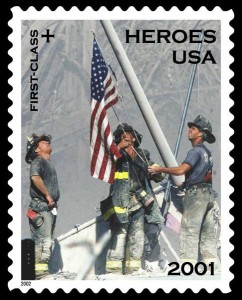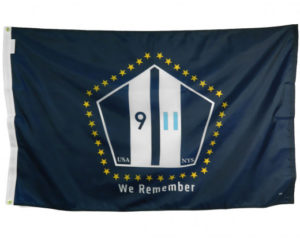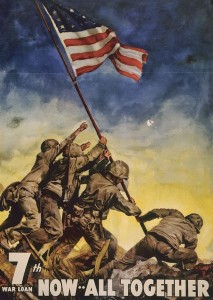Searching for 9/11 flag
By James Breig
When is A flag not THAT flag?

That odd but important question lies at the heart of a documentary that debuted Sept. 4 on CNN. The 90-minute program, “The Flag,” went in search of the banner that flew atop the rubble of 9/11 in New York City in 2001.
Everyone remembers THAT flag. A famous photograph captured the moment when three firemen created a makeshift memorial that was, at once, a salute to those who died, a summons to renewed patriotism and a vow to triumph.
 The flag they raised was taken from a yacht moored near Ground Zero. When the owners asked for it back so they could donate it to the Smithsonian Museum, they got A flag, but not THAT flag. The returned banner was much larger than the one removed from their boat, which was appropriately named “Star of America.”
The flag they raised was taken from a yacht moored near Ground Zero. When the owners asked for it back so they could donate it to the Smithsonian Museum, they got A flag, but not THAT flag. The returned banner was much larger than the one removed from their boat, which was appropriately named “Star of America.”
So what happened to the original flag, the one in the photo? That’s what the documentary sought to answer.

That question recalls another famous flag: the one raised by six World War II servicemen atop the island of Iwo Jima in February 1945. Images of that moment were used to sell war bonds and to rally Americans. The iconic photograph of the raising, just as with the 9/11 image, was used in many forms: as postage stamps, souvenir items, sculptures and even a wax museum display. The WWII raising was also the subject of a book and film, “Flags of Our Fathers.”
But THAT flag has its own “which flag” story. The Iwo Jima photo actually shows the raising of a second — and larger — flag on the hill.
The CNN film asks a simple but profound question about the 9/11 flag: Does it matter where the original is? Does it matter how many versions of Old Glory flapped on Iwo Jima? Does the existence of the actual object matter when the abstract concepts it stood for – survival, memory, love for country – endure?
Similar questions arise in families when mementos – great-granddad’s tools or grandma’s suffragette banner – turn out to be misattributed to them. Aren’t the abstract ideas – my ancestor worked with his hands or stood up for her rights – enough?
It’s an intriguing question, and there isn’t an easy answer.
